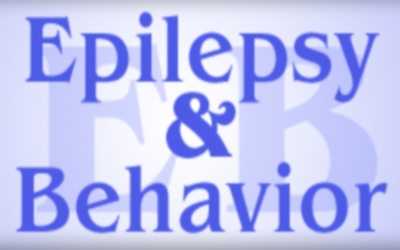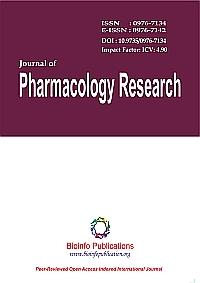Monthly Archives: March 2017
Co-localization of the cannabinoid type 1 receptor with corticotropin-releasing factor-containing afferents in the noradrenergic nucleus locus coeruleus: implications for the cognitive limb of the stress response.

“The noradrenergic system has been shown to play a key role in the regulation of stress responses, arousal, mood, and emotional states. Corticotropin-releasing factor (CRF) is a primary mediator of stress-induced activation of noradrenergic neurons in the nucleus locus coeruleus (LC).
The endocannabinoid (eCB) system also plays a key role in modulating stress responses, acting as an “anti-stress” neuro-mediator.
In the present study, we investigated the cellular sites for interactions between the cannabinoid receptor type 1 (CB1r) and CRF in the LC.
Taken together, these results indicate that the eCB system is poised to directly modulate stress-integrative heterogeneous CRF afferents in the LC, some of which arise from limbic sources.”
The current status of artisanal cannabis for the treatment of epilepsy in the United States.

“The widespread patient use of artisanal cannabis preparations has preceded quality validation of cannabis use for epilepsy. Neurologists and cannabinoid specialists are increasingly in a position to monitor and guide the use of herbal cannabis in epilepsy patients. We report the retrospective data on efficacy and adverse effects of artisanal cannabis in Patients with medically refractory epilepsy with mixed etiologies in Washington State, California, and Maine. Clinical considerations, including potential risks and benefits, challenges related to artisanal preparations, and cannabinoid dosing, are discussed.
RESULTS:
Of 272 combined patients from Washington State and California, 37 (14%) found cannabis ineffective at reducing seizures, 29 (15%) experienced a 1-25% reduction in seizures, 60 (18%) experienced a 26-50% reduction in seizures, 45 (17%) experienced a 51-75% reduction in seizures, 75 (28%) experienced a 76-99% reduction in seizures, and 26 (10%) experienced a complete clinical response. Overall, adverse effects were mild and infrequent, and beneficial side effects such as increased alertness were reported. The majority of patients used cannabidiol (CBD)-enriched artisanal formulas, some with the addition of delta-9-tetrahydrocannabinol (THC) and tetrahydrocannabinolic acid (THCA). Four case reports are included that illustrate clinical responses at doses <0.1mg/kg/day, biphasic dose-response effects, the use of THCA for seizure prevention, the use of THC for seizure rescue, and the synergy of cannabinoids and terpenoids in artisanal preparations. This article is part of a Special Issue entitled “Cannabinoids and Epilepsy”.”
The role of exercise training and the endocannabinoid system in atherosclerotic plaque burden and composition in Apo-E-deficient mice.

“We investigated the effect of combining exercise training and treatment with an endocannabinoid receptor 1 inhibitor (Rimonabant) on atherosclerosis burden and composition.
Both exercise and rimonabant treatments induced plaque regression and promoted plaque stability. The combined treatment failed to show additive or synergistic benefits relative to either intervention alone.”
CB1 receptor-mediated respiratory depression by endocannabinoids.

“Endocannabinoids (ECs) are bioactive lipid mediators acting on two distinct cannabinoid receptors (CB1 and CB2), which are ubiquitously expressed in many tissues including the respiratory system. Despite numerous experimental data showing that cannabinomimetics influence respiration, the role of endogenously produced ECs in respiratory control has not been verified yet. Pulse oximetry was used in the present study to directly measure changes in respiratory parameters during elevation of EC levels. The cannabinoid reuptake inhibitor AM-404 (10mgkg-1, i.v.), but not its vehicle, induced a transient reduction of respiratory rate with a concomitant depression of arterial oxygen saturation and increase in breath distension in wild-type mice. In contrast, CB1 knock-out mice showed no alteration in any of these parameters upon administration of AM-404. Our results imply that the EC system has an important role in the physiological control of respiration by modulating the respiratory rate and consequently influencing arterial oxygen saturation. Furthermore, this mechanism is entirely dependent on CB1 receptors.”
CB2 cannabinoid receptors modulate HIF-1α and TIM-3 expression in a hypoxia-ischemia mouse model.

“The role of CB2 cannabinoid receptors (CB2R) in global brain lesions induced by hypoxia-ischemia (HI) insult is still unresolved.
The aim of this study was to evaluate the involvement of CB2R in the behavioural and biochemical underpinnings related to brain damage induced by HI in adult mice, and the mechanisms involved.
Our results indicate that CB2R may have a crucial neuroprotective role following HI insult through the modulation of the inflammatory-related HIF-1α/TIM-3 signalling pathway in microglia.”
Potential of Cannabidiol for the Treatment of Viral Hepatitis.

“Viral hepatitis B (HBV) and hepatitis C (HCV) pose a major health problem globally and if untreated, both viruses lead to severe liver damage resulting in liver cirrhosis and cancer. While HBV has a vaccine, HCV has none at the moment. The risk of drug resistance, combined with the high cost of current therapies, makes it a necessity for cost-effective therapeutics to be discovered and developed.
The recent surge in interest in Medical Cannabis has led to interest in evaluating and validating the therapeutic potentials of Cannabis and its metabolites against various diseases including viruses. Preliminary screening of cannabidiol (CBD) revealed that CBD is active against HCV but not against HBV in vitro. CBD inhibited HCV replication by 86.4% at a single concentration of 10 μM with EC50 of 3.163 μM in a dose-response assay.
These findings suggest that CBD could be further developed and used therapeutically against HCV. Cannabidiol exhibited in vitro activity against viral hepatitis C.” https://www.ncbi.nlm.nih.gov/pubmed/28250664
“Cannabidiol (CBD) is a nonpsychoactive cannabinoid found in the Cannabis plants and is credited for several pharmacological properties. It is also known to have beneficial effects against inflammation/pain, neurological conditions, cancer, and other ailments. In general, with regard to antiviral activity, medical Cannabis was reported to be used as an accompanying remedy by HIV/AIDS patients to alleviate neuropathic pain, wasting, nausea, and vomiting. Given the increasing use and application of medical Cannabis along with its nonpsychoactive metabolite (CBD), and in line with our continuous effort to evaluate and validate the potential therapeutic properties of CBD, the major aim of this study was as such to evaluate the anti-HBV and anti-HCV activities of CBD in vitro. We report here for the first time in vitro studies to demonstrate the antiviral activity of CBD against HCV. CBD was shown to have activity against HCV in vitro but not against HBV. A review of the literature seems to suggest that CBD may also have activity in vivo based on its interaction with the CB2 receptor and as such using a host mechanism to indirectly slow the pathogenic process of the HBV virus. Based on these findings, CBD as such has potential to be further developed as a treatment for viral hepatitis, especially as a combination therapy with the currently existing therapies.” https://www.ncbi.nlm.nih.gov/pmc/articles/PMC5330095/
The Direct Actions of Cannabidiol and 2-Arachidonoyl Glycerol at GABAA Receptors.

“Cannabidiol (CBD) is a major non-intoxicating component of cannabis and possesses anti-epileptic, anxiolytic and anti-hyperalgesic properties.
Despite evidence that some endogenous and synthetic cannabinoids interact with GABAA receptors, no-one has yet investigated the effects of CBD.
Here we used two-electrode voltage clamp electrophysiology to compare the actions of CBD with those of the major central endocannabinoid, 2-arachidonoyl glycerol (2-AG) on human recombinant GABAA receptors (synaptic α1-6βg2 and extrasynaptic α4β2δ) expressed on Xenopus oocytes.
Taken together these results reveal a mode of action of CBD on specifically configured GABAA receptors that may be relevant to the anticonvulsant and anxiolytic effects of the compound.”
Flexible Bionanocomposites from Epoxidised Hemp Seed Oil Thermosetting Resin Reinforced with Halloysite Nanotubes.

“Hempseed (Cannabis sativa L.) oil comprises a variety of beneficial unsaturated triglycerides with well-documented nutritional and health benefits.
However, it can become rancid over a relatively short time period leading to increased industrial costs and waste of a valuable product. The development of sustainable polymers is presented as a strategy where both the presence of unsaturation and perox-ide content could be affectively utilised to alleviate both this waste and financial burden.
After reaction with peroxyacetic acid, incorporation of halloysite nanotubes (HNTs) and sub-sequent thermal curing, without the need for organic sol-vents or interfacial modifiers, flexible transparent materials with a low glass transition temperature were developed. The improvement in thermal stability and both the static and dynamic mechanical properties of the bionanocomposites were significantly enhanced with the well-dispersed HNT filler. At an optimum concentration of 0.5 wt.% HNTs, a simultaneous increase in stiffness, strength, ductility and toughness was observed in comparison to the unfilled cured resin.
These sustainable food-waste derived bionanocompo-sites may provide an interesting alternative to petroleum-based materials, particularly for low-load bearing applica-tions, such as packaging.”
Changes in the Brain Endocannabinoid System in Rat Models of Depression.

“A growing body of evidence implicates the endocannabinoid (eCB) system in the pathophysiology of depression.
The aim of this study was to investigate the influence of changes in the eCB system, such as levels of neuromodulators, eCB synthesizing and degrading enzymes, and cannabinoid (CB) receptors, in different brain structures in animal models of depression using behavioral and biochemical analyses.
These findings suggest that dysregulation in the eCB system is implicated in the pathogenesis of depression, although neurochemical changes were linked to the particular brain structure and the factor inducing depression (surgical removal of the olfactory bulbs vs. genetic modulation).”
